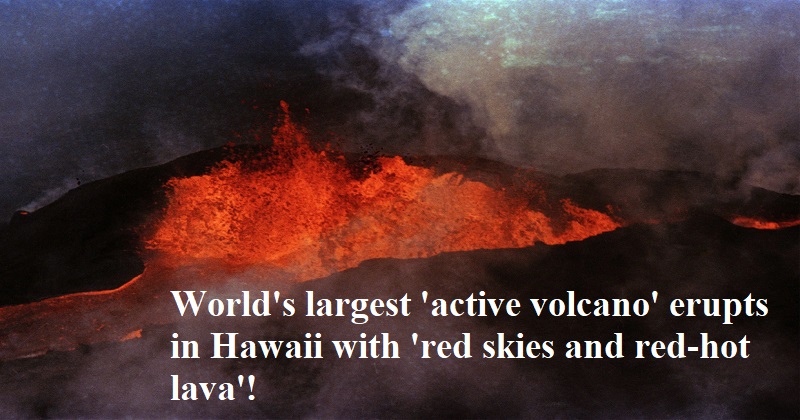
The biggest active volcano in the world, Mauna Loa in Hawaii, erupted for the first time since 1984. As boiling lava erupted from the volcano’s peak on Monday, the night sky over Hawaii in the US became ablaze. There were warning indicators that an eruption would happen because the area has lately seen multiple earthquakes and tremors. Long, bright eruptive fissures within the volcanic crater were visible on a USGS webcam on the summit’s northern rim, standing out against the nighttime darkness.
According to the US Geological Service (USGS), the lava is contained within the summit and is not currently a threat to Hawaiians who live downslope. However, the organisation issued a warning that volcanic gases and fine ash may drift into residential areas. Images taken shortly after the eruption showed Mauna Loa ending its longest period of quiet in history as the night sky over the island turned red. The Hawaiian islands were created by a series of volcanoes, including Mauna Loa. It last erupted in March and April of 1984, sending a flow of lava within 8 km of Hilo, the island’s largest city.
As a precaution, Hawaiian officials opened shelters but did not issue any evacuation orders, stating that there are no indications that lava will pose a threat to inhabited areas. However, the alert level for the volcano has also been raised from ‘advisory’ to ‘warning’ — the highest rating — since the US Geological Service stated that the situation might ‘alter fast,’ according to the BBC.
The USGS stated that the early phases of a Mauna Loa eruption can be extremely dynamic and that the position and progress of lava flows can alter suddenly. Since Mauna Lao last erupted in 1984, the USGS estimates that the population of Hawaii has doubled. It stated that Hilo and Kona, two of the island’s most populous areas, are at risk if the eruption spreads beyond the summit caldera’s walls because lava flows may ‘move fast downslope’.

Post Your Comments